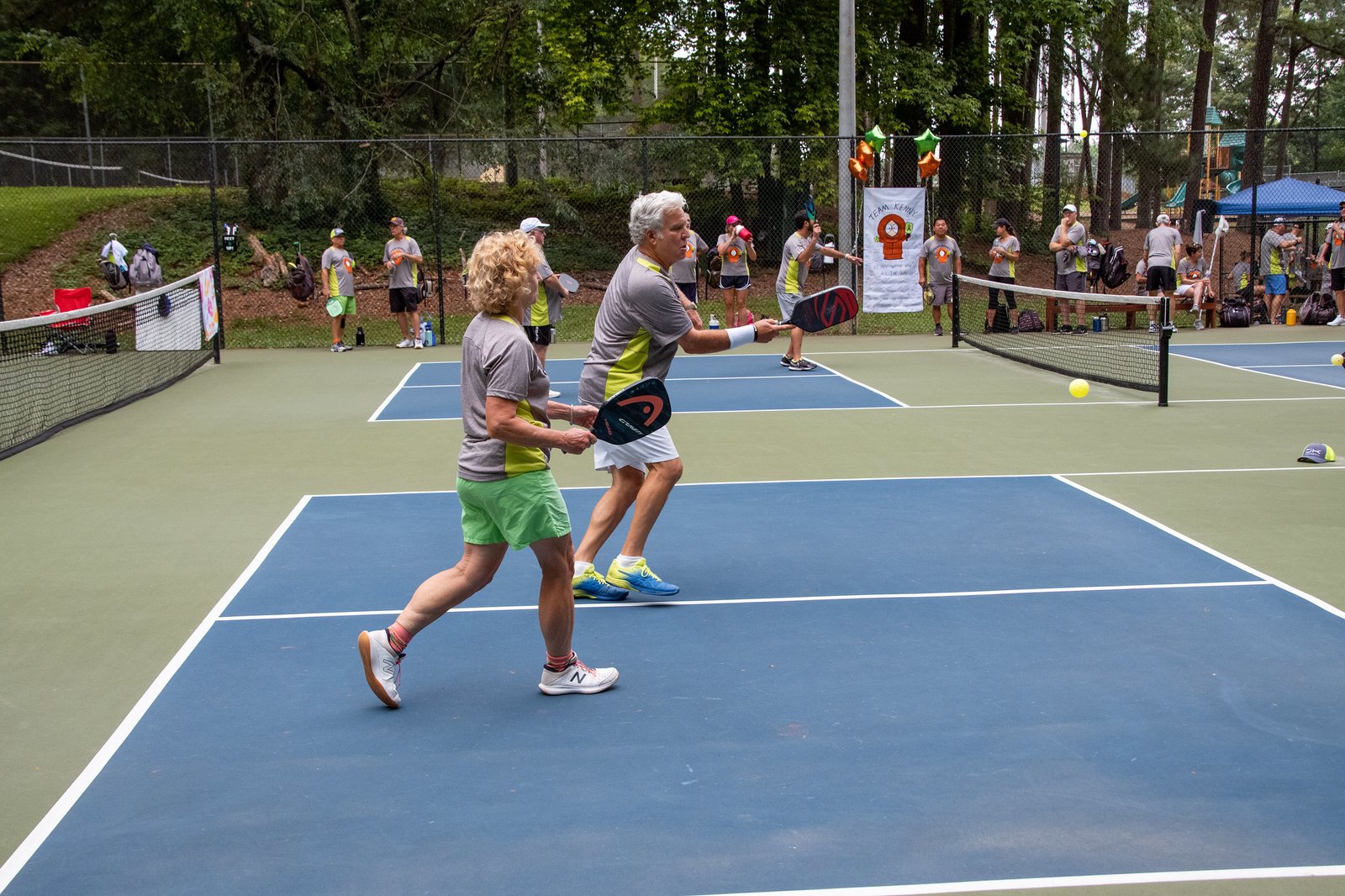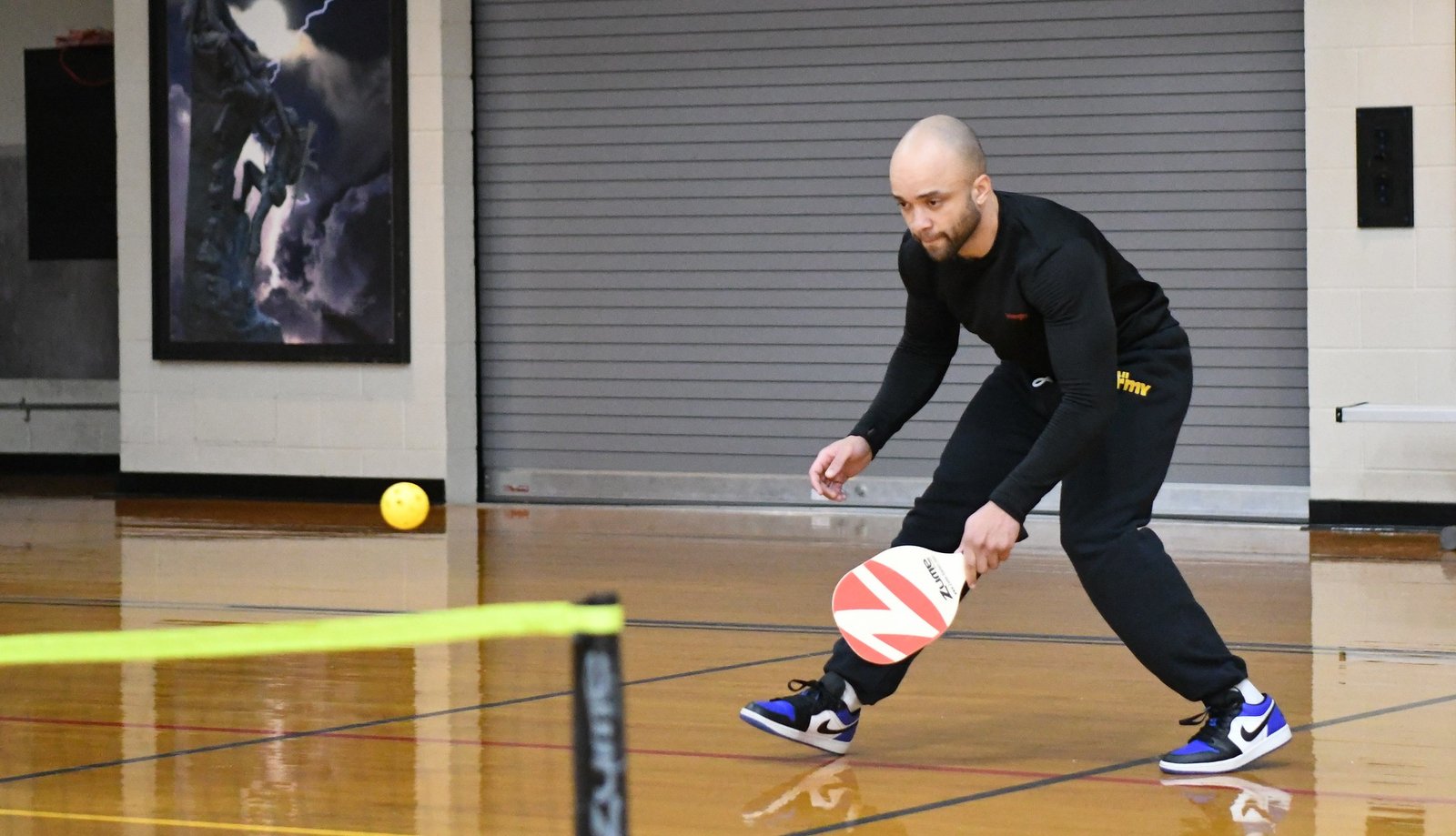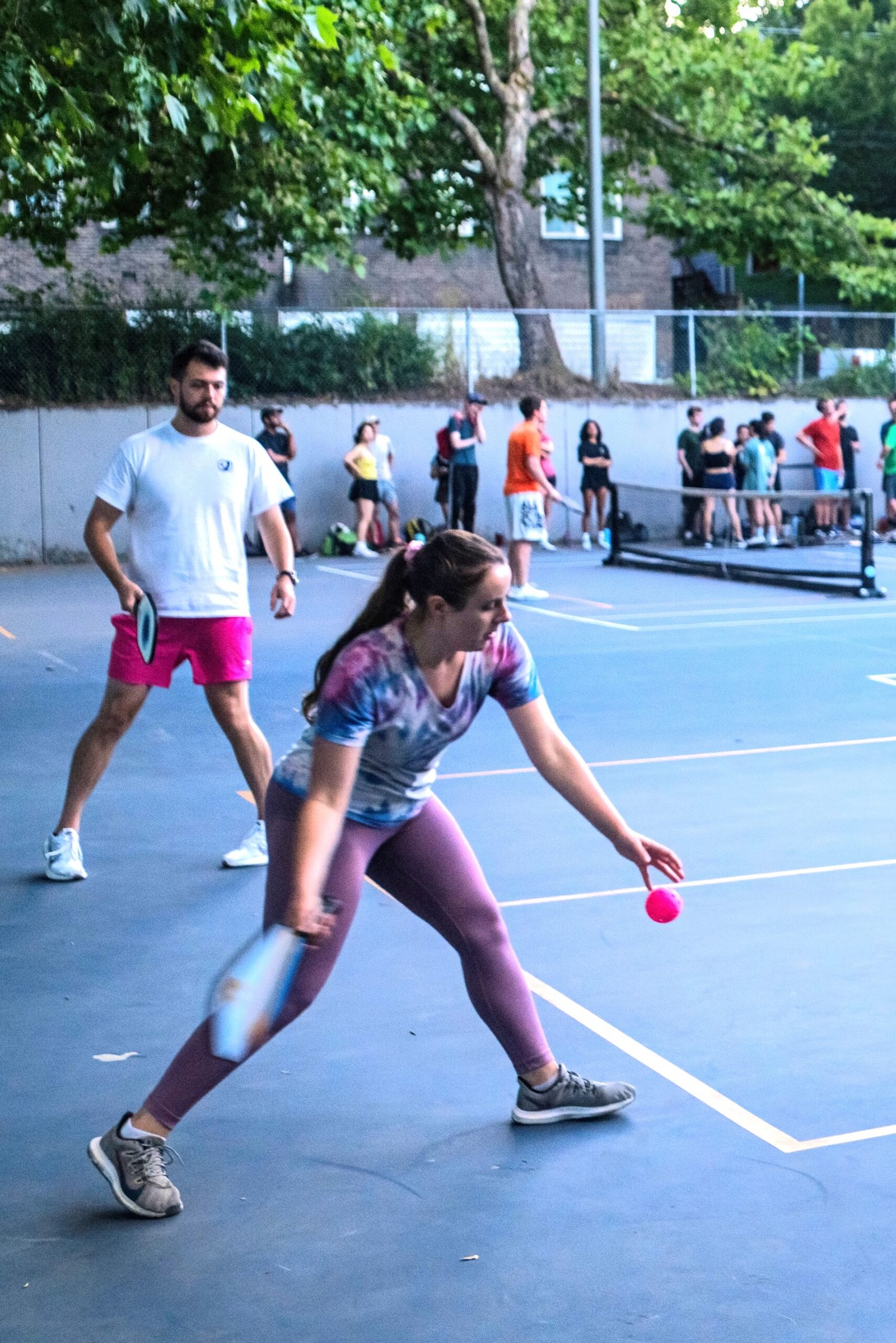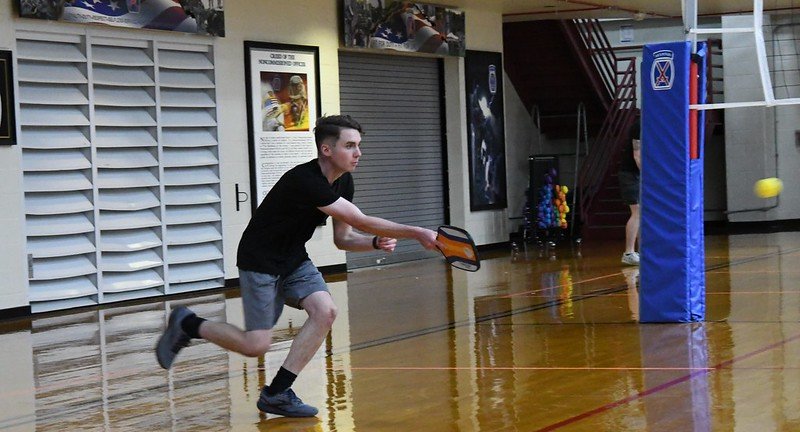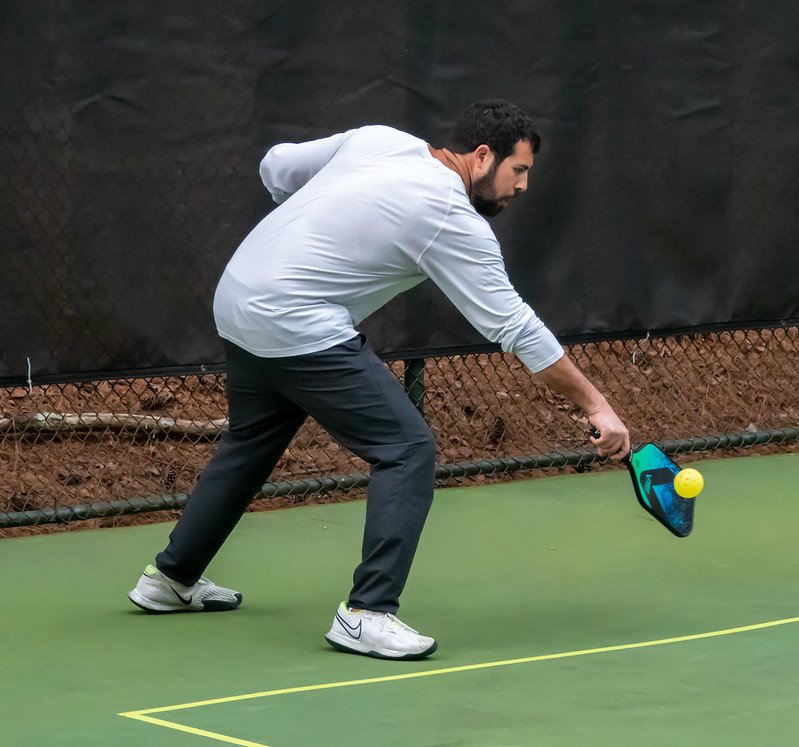Pickleball, a rapidly growing racquet sport, has taken the sporting world by storm with its unique blend of excitement, strategy, and camaraderie. This engaging game, often described as a fusion of tennis, badminton, and table tennis, has gained immense popularity across all age groups and skill levels. At the heart of this phenomenon lies the thrilling world of Pickleball Doubles, where teamwork, quick reflexes, and adherence to Pickleball rules come together to create an exhilarating sporting experience.
Pickleball is not just a game; it’s a dynamic and inclusive sport that offers something for everyone. Whether you’re a seasoned athlete or someone new to the world of racquet sports, Pickleball provides an accessible and enjoyable way to stay active and connect with others. But what sets Pickleball Doubles apart from the singles variant is the added dimension of teamwork. In Pickleball Doubles, two-player teams work in tandem, showcasing their skills and coordination to outwit their opponents and secure victory.
Understanding Pickleball rules is fundamental to enjoying the game to its fullest. The court, the equipment, and the scoring system all play crucial roles in creating a level playing field. Pickleball Doubles, like its singles counterpart, has a clear set of regulations governing everything from the serve to the non-volley zone, ensuring fair play and a thrilling competition.
A typical Pickleball game is fast-paced and action-packed, with rallies that can change in the blink of an eye. The combination of precision shots, strategic placement, and quick reflexes keeps players engaged and spectators on the edge of their seats. Whether you’re smashing a forehand winner or deftly placing a drop shot just over the net, every moment in a Pickleball game is a chance to showcase your skills and strategy.
Table of Contents
In the following sections, we will delve deeper into the world of Pickleball Doubles, exploring the rules, strategies, and tactics that make this sport so captivating. Whether you’re a seasoned Pickleball enthusiast or a newcomer eager to learn, join us as we embark on a journey through the exciting world of Pickleball Doubles, where teamwork and sportsmanship thrive, and where every game is an opportunity to challenge yourself and create lasting memories on the court.
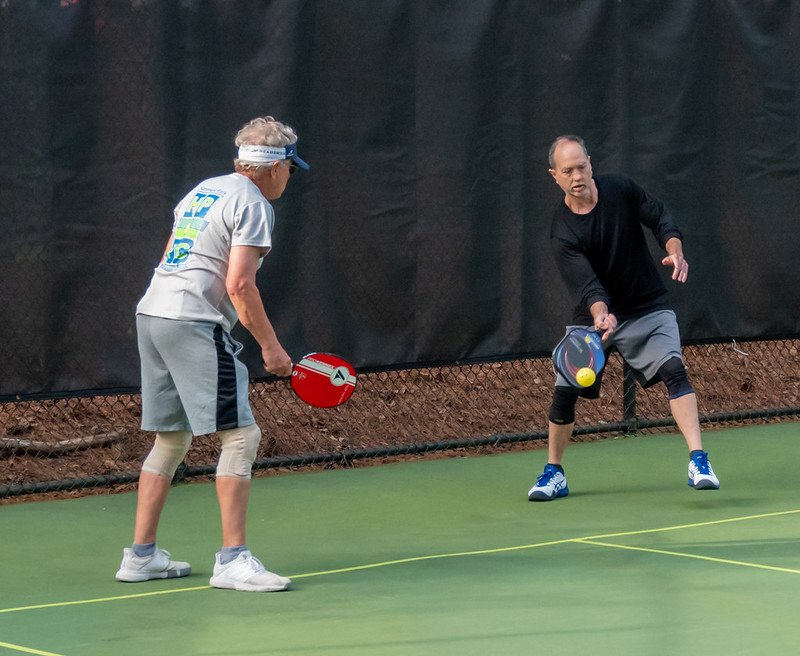
How do you do pickleball doubles?
To play pickleball doubles, follow these key steps:
Team Formation
Form two teams, each consisting of two players. Position yourselves on opposite sides of the pickleball court, with one player on the right side and the other on the left side.
Starting the Game
Begin with a serve. The serving team must start in the right-hand service box, and the receiving team stands in the corresponding service box on the other side of the net. Decide which team serves first, either through a coin toss or a rally.
The Serve
The server must serve diagonally to the opponent’s service box. The serve should clear the non-volley zone (the “kitchen”) but land in the opponent’s service box. The server continues serving until a fault is committed.
Scoring
Employ a rally scoring system, where points can be scored by the serving or receiving team. Games are typically played to 11, 15, or 21 points, with a winning margin of at least two points.
Double Bounce Rule
After the serve, both teams must let the ball bounce once before they can volley (hit the ball in the air). Once both teams have had one bounce, they can choose to volley or let the ball bounce before hitting it.
Non-Volley Zone
A seven-foot non-volley zone exists on both sides of the net. Players cannot volley while standing inside this zone but can enter it to play a ball that has bounced.
Service Rotation
Rotate the service between the two players on the serving team whenever they score a point.
Faults
Common faults include hitting the ball out of bounds, hitting the net, stepping into the non-volley zone while volleying, or committing a double bounce violation.
Winning the Match
Typically, a match in pickleball doubles is played as a best-of-three games, with each game played to a set number of points. The team that wins two out of three games wins the match.
Pickleball doubles is a dynamic and social sport that combines strategy, teamwork, and quick reflexes. Follow these guidelines, enjoy the game, and embrace the spirit of friendly competition on the court.

How is pickleball scoring done?
Pickleball scoring is relatively straightforward, and games are typically played to 11, 15, or 21 points, depending on the agreed-upon format. Here’s how pickleball scoring is done in a nutshell:
Rally Scoring
Pickleball uses a rally scoring system, which means that a point can be scored on every rally, regardless of which team is serving.
Serve
The game begins with a serve, and the serving team attempts to score points. The server must stand behind the baseline and serve the ball diagonally across the net to the opponent’s service box. The ball must clear the non-volley zone and land in the service box.
Points
Points can be scored by either the serving team or the receiving team. The first team to reach the agreed-upon score wins the game. However, you must win by at least two points. For example, if the score is 14-13 in a game played to 15, the winning team must score one more point to win.
Service Rotation
In doubles, each team rotates service between the two players on the serving team whenever they score a point. This means that the serving team switches servers after every successful rally.
Match
A typical match consists of best-of-three games. The team that wins two out of three games wins the match. Players often switch sides of the court after the first game and again if a third game is necessary.
Tiebreaker
In some situations, if the score reaches a predetermined limit (e.g., 10-10 in a game to 11), a “win by 2” rule applies, where play continues until one team leads by two points.
Overall, pickleball scoring is designed to keep games competitive, fast-paced, and exciting, making it accessible and enjoyable for players of all skill levels.
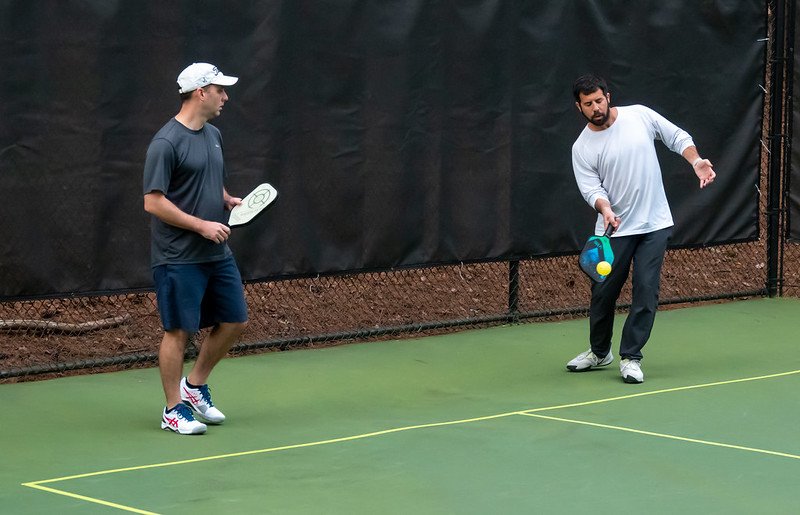
Pickleball Doubles: A Step-by-Step Guide
Pickleball doubles is a popular variation of the sport that is played with two teams, each consisting of two players. The rules for pickleball doubles are similar to those for singles, with some key differences. Here’s a step-by-step guide on how to play pickleball doubles:
Equipment
To play pickleball doubles, you’ll need a few essential pieces of equipment and a regulation-sized court. Gather a pickleball court, a net, pickleball paddles, and a pickleball to get started. The court should adhere to standard dimensions, measuring 20 feet in width and 44 feet in length. It’s divided into two service boxes on each side of the net, with a seven-foot non-volley zone (the “kitchen”) on both ends.
The court layout is crucial for maintaining fairness and consistency in the game. The net divides the court into two halves, and the service boxes are where serves must be directed during play. The non-volley zone, situated near the net on both sides, adds an extra layer of strategy to the game, as players must be careful not to volley from within this zone.
Having the right equipment and court dimensions ensures that you can fully enjoy the exciting and dynamic experience of pickleball doubles, where teamwork, skill, and strategy come together for an engaging sporting endeavor.
Team Setup
In pickleball doubles, each team is composed of two players, creating a dynamic partnership on the court. The positioning of players is crucial for effective teamwork and court coverage. Typically, one player stands on the right side of the court when serving or receiving on even-numbered courts, while the other player takes the left side on odd-numbered courts. This positioning allows for efficient court coverage, as each player can utilize their strengths and cover their respective sides effectively.
The player on the right side often has a stronger forehand, which is advantageous for returns and aggressive shots during rallies. Meanwhile, the player on the left side may have a strong backhand or other strategic skills that complement their partner’s strengths. This balanced setup ensures that both sides of the court are covered, and players can work together to outmaneuver their opponents.
Effective communication and synchronization between the two players are key to success in pickleball doubles, as they must coordinate their movements and strategies to dominate the game. This collaborative approach enhances the excitement and competitiveness of pickleball doubles, making it a thrilling sport that emphasizes both individual skills and teamwork.
Starting the Game
Pickleball doubles commences with a serve, a pivotal moment that sets the game in motion. To determine which team serves first, either a coin toss or a rally can be used. The victorious team in this preliminary decision then takes the role of the serving team.
When it comes to the actual serve, the serving team must adhere to specific positioning rules. The player designated to serve must stand within the right-hand service box, positioned diagonally across from their opponents. On the opposing side of the net, the receiving team readies themselves within the corresponding service box.
This carefully orchestrated setup ensures fairness and balance at the outset of each game. The serve, being the initial offensive move, is critical in dictating the pace and direction of play. As such, it marks the beginning of each exciting pickleball doubles match, where strategy, skill, and teamwork combine to create an engaging and dynamic sporting experience.
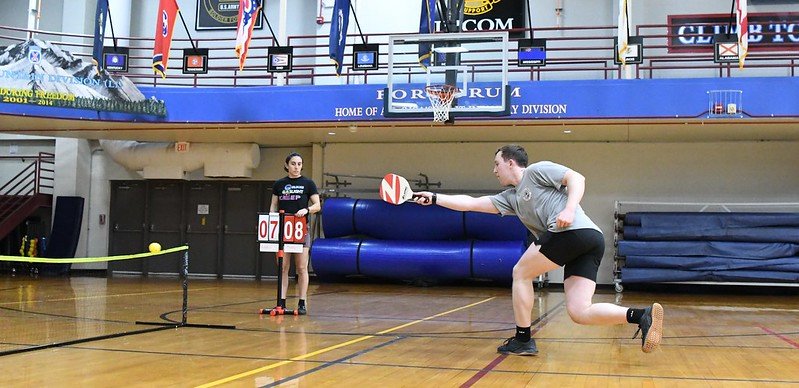
The Serve
In pickleball doubles, the server starts the game by serving diagonally to the opponent’s service box, aiming to clear the non-volley zone (the “kitchen”) and land the serve in the opponent’s service box. The server retains the serve as long as they don’t commit a fault, such as serving out of bounds or into the net. Once the serve is successful, the game continues with both teams allowing the ball to bounce once on each side before hitting it in the air (following the double bounce rule).
This ensures fair play and encourages strategic shots. The objective is to score points on every rally and win the game by reaching the agreed-upon score, typically 11, 15, or 21 points while maintaining a winning margin of at least two points. The dynamic interplay of serves, volleys, and teamwork makes pickleball doubles an engaging and enjoyable sporting experience for all participants.
Scoring
Pickleball employs a rally scoring system, a key feature that sets it apart from some other racquet sports. In this system, points can be earned by either the serving or receiving team, regardless of who serves. This ensures constant engagement and excitement throughout the game.
Games in pickleball are typically played to a predetermined number of points, commonly 11, 15, or 21 points. However, players must secure a winning margin of at least two points over their opponents to clinch the game. This “win by two” rule adds an extra layer of competitiveness and drama, as close games can continue until one team establishes a clear advantage.
The first team to reach the agreed-upon score emerges as the victor of the game, demonstrating their prowess, strategy, and teamwork. This scoring system not only keeps pickleball games dynamic but also allows for thrilling comebacks and tense moments on the court, making pickleball doubles an engaging and captivating sport for players and spectators alike.
Double Bounce Rule
In pickleball doubles, there’s a fundamental rule known as the double bounce rule. After the serve, both teams are required to allow the ball to bounce once before they can execute a volley, which means hitting the ball in the air without letting it bounce again. This rule adds an element of strategy and ensures fair play.
Once both teams have successfully allowed the ball to bounce once, they are free to choose whether to continue volleying, hitting the ball in the air, or to let it bounce before hitting it. This rule promotes longer rallies, strategy, and skillful placement of shots, as players must anticipate their opponents’ moves and decide when to volley or let the ball bounce for better positioning.
The double bounce rule is a key feature of pickleball, emphasizing the importance of both groundstrokes and volleys in the game. It adds excitement, unpredictability, and an extra layer of strategy to every rally, making pickleball doubles a dynamic and engaging sport for players of all skill levels.
Non-Volley Zone (The “Kitchen”)
In pickleball doubles, the non-volley zone, often referred to as “the kitchen,” is a critical element of the game. This seven-foot area extends on both sides of the net and serves to create a balanced playing field. The rules governing the non-volley zone are straightforward:
Players are not allowed to volley the ball, meaning they cannot hit it in the air without first letting it bounce, while standing inside the non-volley zone. This rule encourages longer rallies and strategic placement of shots.
However, players can enter the non-volley zone to make a shot as long as the ball has already bounced. Once the ball has touched the ground within or outside the non-volley zone, players are free to step inside and make a volley if they wish. This adds an extra layer of strategy to the game, as players must time their movements and shots carefully to maximize their advantage while adhering to this rule.
Mastering the nuances of the non-volley zone is key to success in pickleball doubles, as it requires players to balance aggression with precision and often leads to exciting, well-executed plays near the net.
Service Rotation
In pickleball doubles, a fundamental rule is the rotation of service within each team. This rule ensures fairness and gives both players on a team an equal opportunity to serve and participate actively in the game.
The rotation occurs after a team successfully scores a point. The player who served during that point moves to the opposite side of the serving team’s court. Meanwhile, their teammate, who was previously on the non-serving side, steps into the serving position. This rotation helps maintain balance and ensures that no single player dominates the serving role throughout the game.
By enforcing this service rotation rule, pickleball doubles emphasize teamwork, cooperation, and shared responsibility. It encourages players to develop their serving skills and strategies, as both players need to be proficient in delivering effective serves. This rule also adds an element of unpredictability to the game, as opponents must adapt to different serving styles and strategies from both members of the opposing team. Overall, service rotation enhances the dynamics of pickleball doubles and makes it a more engaging and competitive sport for players of all levels.
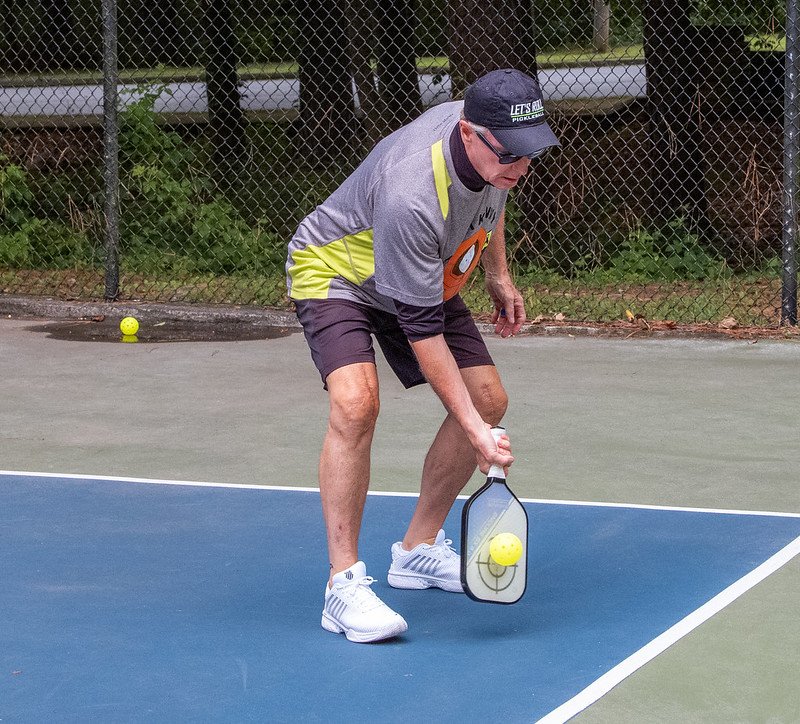
Faults
In pickleball doubles, common faults can disrupt gameplay and result in a point loss or a change of serve. Hitting the ball out of bounds, where it lands beyond the designated court area, is a fault. Another fault occurs when the ball hits the net during play, hindering its trajectory. Stepping into the non-volley zone, a seven-foot area adjacent to the net, while volleying (hitting the ball before it bounces) also constitutes a fault.
This zone is off-limits for volleys, and players must exercise caution to avoid foot faults. Lastly, committing a double bounce violation, hitting the ball twice before the opposing team hits it, is considered a fault. Awareness and adherence to these rules are essential for a fair and enjoyable game of pickleball doubles, promoting sportsmanship and maintaining the game’s integrity.
Winning the Pickleball Doubles
In pickleball doubles, matches are usually structured as best-of-three games, with each game played to a predetermined number of points. The team that secures victory in two out of the three games emerges as the winner of the match. This format adds an element of competitiveness and endurance to the sport, as it requires teams to perform well across multiple games consistently.
The decision to play best-of-three games allows for a fairer and more engaging competition. It ensures that a single lucky or exceptional performance by one team in a single game doesn’t determine the entire match’s outcome. Instead, teams must consistently demonstrate their skills, teamwork, and understanding of pickleball’s rules and strategies to emerge victorious.
This three-game structure also fosters a sense of sportsmanship and camaraderie among players, as it allows for adjustments and adaptations between games. Whether you win or lose a game, there’s always the opportunity to regroup, strategize, and aim for a comeback in the next one. It’s a format that adds excitement and unpredictability to the world of pickleball doubles, making each match a thrilling and dynamic experience for players and spectators alike.
Pickleball is a dynamic and inclusive sport enjoyed by people of all ages and skill levels. While the basic rules and principles of pickleball doubles remain consistent, it’s essential to acknowledge that minor variations may exist depending on location and the level of play. These variations can add an interesting twist to the game and make it even more enjoyable.
As you step onto the pickleball court, remember that it’s not just about competition; it’s about camaraderie and having fun. Don’t hesitate to seek clarification or guidance from your fellow players if you encounter rule differences or uncertainties. The pickleball community is known for its friendly and welcoming atmosphere, and experienced players are often more than willing to share their knowledge.
So, embrace the diversity of pickleball, adapt to the specific rules of your game, and relish the opportunity to connect with others while engaging in this exciting sport. Ultimately, pickleball is about the joy of playing, improving your skills, and creating lasting memories on the court. Enjoy every moment!

